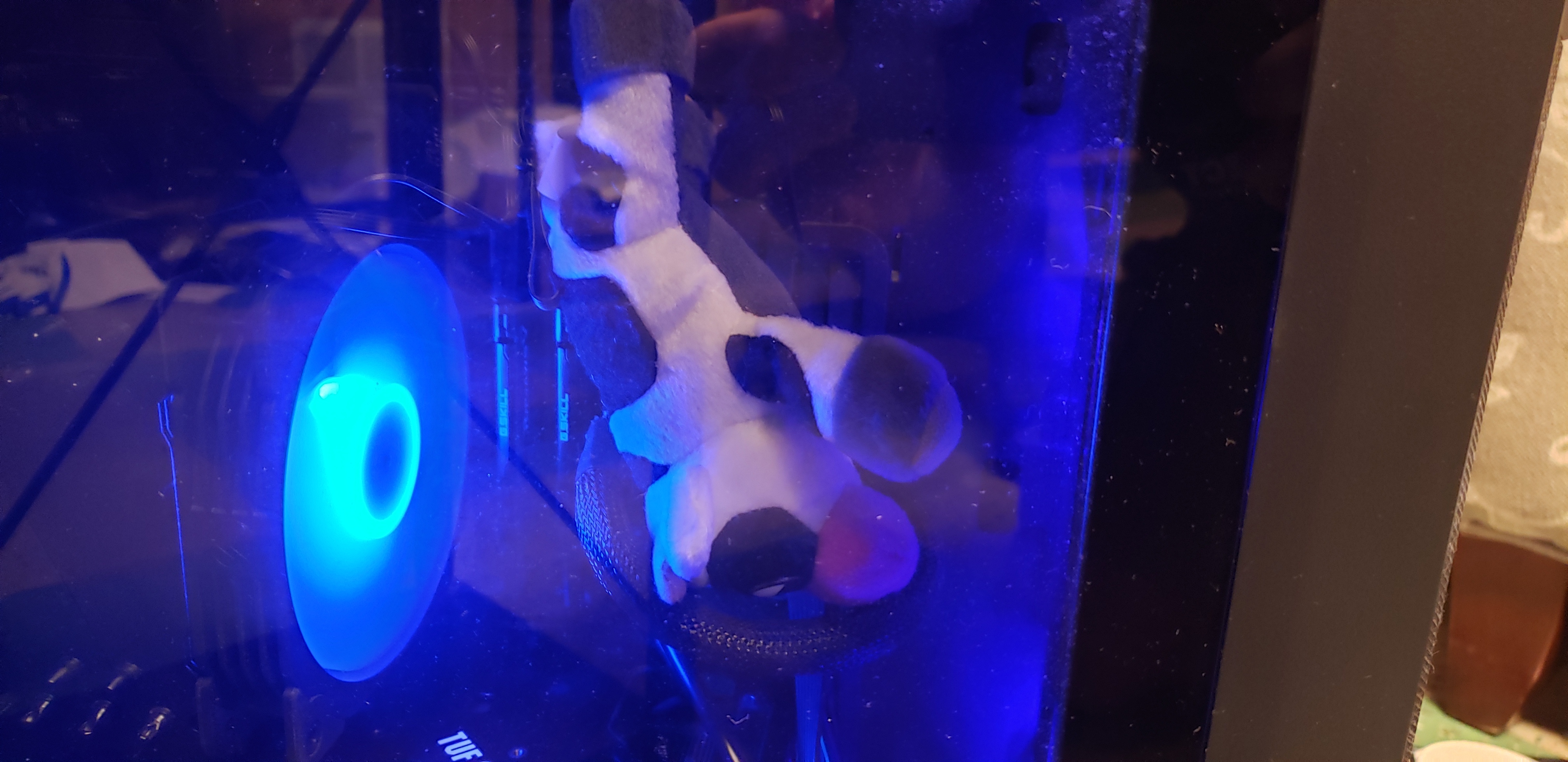About a year ago I switched to ZFS for Proxmox so that I wouldn’t be running technology preview.
Btrfs gave me no issues for years and I even replaced a dying disk with no issues. I use raid 1 for my Proxmox machines. Anyway I moved to ZFS and it has been a less that ideal experience. The separate kernel modules mean that I can’t downgrade the kernel plus the performance on my hardware is abysmal. I get only like 50-100mb/s vs the several hundred I would get with btrfs.
Any reason I shouldn’t go back to btrfs? There seems to be a community fear of btrfs eating data or having unexplainable errors. That is sad to hear as btrfs has had lots of time to mature in the last 8 years. I would never have considered it 5-6 years ago but now it seems like a solid choice.
Anyone else pondering or using btrfs? It seems like a solid choice.
Don’t use btrfs if you need RAID 5 or 6.
The RAID56 feature provides striping and parity over several devices, same as the traditional RAID5/6. There are some implementation and design deficiencies that make it unreliable for some corner cases and the feature should not be used in production, only for evaluation or testing. The power failure safety for metadata with RAID56 is not 100%.
https://btrfs.readthedocs.io/en/latest/btrfs-man5.html#raid56-status-and-recommended-practices
Or run the raid 5 or 6 separately, with hardware raid or mdadm
Even for simple mirroring there’s an argument to be made for running it separately from btrfs using mdadm. You do lose the benefit of btrfs being able to automatically pick the valid copy on localised corruption, but the admin tools are easier to use and more proven in a case of full disk failure, and if you run an encrypted block device you need to encrypt half as much stuff.
I have no problem running it with raid 5/6. The important thing is to have a UPS.
I’ve been running a btrfs storage array with data on raid5 and metadata I believe raid1 for the last 5 or so years and have yet to have a problem because of it. I did unfortunately learn not to fully trust the windows btrfs driver but was fortunately able to restore from backups and redownloading.
I wouldn’t hesitate to set it up again for myself or anybody else, and adding a UPS would be icing on the cake. (I added UPS to my setup this last summer)
I’ve got raid 6 at the base level and LVM for partitioning and ext4 filesystem for a k8s setup. Based on this, btrfs doesn’t provide me with any advantages that I don’t already have at a lower level.
Additionaly, for my system, btrfs uses more bits per file or something such that I was running out of disk space vs ext4. Yeah, I can go buy more disks, but I like to think that I’m running at peak efficiency, using all the bits, with no waste.
btrfs doesn’t provide me with any advantages that I don’t already have at a lower level.
Well yeah, because it’s supposed to replace those lower levels.
Also, BTRFS does provide advantages over ext4, such as snapshots, which I think are fantastic since I can recover if things go sideways. I don’t know what your use-case is, so I don’t know if the features BTRFS provides would be valuable to you.
Generally, if a lower level can do a thing, I prefer to have the lower level do it. It’s not really a reason, just a rule of thumb. I like to think that the lower level is more efficient to do the thing.
I use LVM snapshots to do my backups. I don’t have any other reason for it.
That all being said, I’m using btrfs on one system and if I really like it, I may migrate to it. It does seem a whole lot simpler to have one thing to learn than all the layers.
Actually, the lower level may likely be less efficient, due to being oblivious about the nature of the data.
For example, a traditional RAID1 mirror on creation immediately starts a rebuild across all the potential data capacity of the storage, without a single byte of actual data written. So you spend an entire drive wipe making “don’t care” bytes redundant.
Similarly, for snapshotting, it can only track dirty blocks. So you replace uninitialized data that means nothing with actual data, the snapshot layer is compelled to back up that unitiialized data, because it has no idea whether the blocks replaced were uninialized junk or real stuff.
There’s some mechanisms in theory and in practice to convey a bit of context to the block layer, but broadly speaking by virtue of being a mostly oblivious block level, you have to resort to the most naive and often inefficient approaches.
That said, block capacity is cheap, and doing things at the block level can be done in a ‘dumb’ way, which may be easier for an implementation to get right, versus a more clever approach with a bigger surface for mistakes.
Those are some good points. I guess I was thinking about the hardware. At least where I do RAID, it’s on the controller, so that offloads much of the parity checking and such to the controller and not the CPU. It’s all probably negligible for the apps that I run, but my hardware is quite old, so maybe trying to squeeze all the performance I can is a worthwhile activity.
Yup, I used to use LVM, but the two big NAS filesystems have a ton of nice features and they expect to control the disk management. I looked into BTRFS and ZFS, and since BTRFS is native to Linux (some of my SW doesn’t support BSD) and I don’t need anything other than RAID mirror, that’s what I picked.
I used LVM at work for simple RAID 0 systems where long term uptime was crucial and hardware swaps wouldn’t likely happen (these were treated like IOT devices), and snapshots weren’t important. It works well. But if you want extra features (file-level snapshots, compression, volume quotas, etc), BTRFS and ZFS make that way easier.
I am interested in compression. I may give it a try when I swap out my desktop system. I did try btrfs in it’s early, post alpha stage, but found that the support was not ready yet. I think I had a VM system that complained. It is older now and more mature and maybe it’s worth another look.
A bit of topic; am I the only one that pronounces it “butterface”?
Not anymore.
You son of a bitch, I’m in.
Ah feck. Not any more.
Isn’t it meant to be like “better FS”? So you’re not too far off.
i call it “butter FS”
I was meant to be Better FS, but it corrupted it to btrfs without noticing.
I call it butter fuss. Yours is better.
Related, and I cannot help but read “bcachefs” as “bitch café”
Similarly, I read bcachefs as BCA Chefs 😅
No reason not to. Old reputations die hard, but it’s been many many years since I’ve had an issue.
I like also that btrfs is a lot more flexible than ZFS which is pretty strict about the size and number of disks, whereas you can upgrade a btrfs array ad hoc.
I’ll add to avoid RAID5/6 as that is still not considered safe, but you mentioned RAID1 which has no issues.
I’ve been vaguely planning on using btrfs in raid5 for my next storage upgrade. Is it really so bad?
Check status here. It looks like it may be a little better than the past, but I’m not sure I’d trust it.
An alternative approach I use is mergerfs + snapraid + snapraid-btrfs. This isn’t the best idea for a system drive, but if it’s something like a NAS it works well and
snapraid-btrfsdoesn’t have the write hole issues that normalsnapraiddoes since it operates on r/o snapshots instead of raw data.It’s affected by the write-hole phenomenon. In BTRFS case that can mean that perfectly good old data might corrupt without any notice.
You shouldn’t have abysmal performance with ZFS. Something must be up.
What’s up is ZFS. It is solid but the architecture is very dated at this point.
There are about a hundred different settings I could try to change but at some point it is easier to go btrfs where it works out of the box.
Since most people with decently simple setups don’t have the described problem likely somethings up with your setup.
Yes ifta old and yes it’s complicated but it doesn’t have to be to get a decent performance.
I used to run a mirror for a while with WD USB disks. Didn’t notice any performance problems. Used Ubuntu LTS which has a built-in ZFS module, not DKMS, although I doubt there’s performance problems stemming from DKMS.
I have been trying to get ZFS working well for months. Also I am not the only one having issues as I have seen lots of other posts about similar problems.
I don’t doubt that you have problems with your setup. Given the large number of (simple) zfs setups that are working flawlessly there are a bound to be a large number of issues to be found on the Internet. People that are discontent voice their opinion more often and loudly compared to the people that are satisfied.
What seems dated in its architecture? Last time I looked at it, it struck me as pretty modern compared to what’s in use today.
It doesn’t share well. Anytime anything IO heavy happens the system completely locks up.
That doesn’t happen on other systems
That doesn’t speak much of the architecture. Also it’s really odd. Not denying what you’re seeing is happening, just that it seems odd based on the setups I run with ZFS. My main server is in fact a shared machine that I use as a workstation and games along as a server. All works in parallel. I used to have a mirror, then a 4-disk RAIDz and now an 8-disk RAIDz2. I have multiple applications constantly using the pool. I don’t notice any performance slowdowns on the desktop, or in-game when IO goes high. The only time I notice anything is when something like multiple Plex transcoders hit the CPU hard. Sequential performance is around 1.3GB/s which is limited by the data bus speeds (USB DAS boxes). Random performance is very good although I don’t have any numbers out of my head. I’m using mostly WD Elements shucked disks and a couple of IronWolfs. No enterprise grade disks on this system.
I’m also not saying that you have to keep fucking around with it instead of going Btrfs. Simply adding another anecdote to the picture. If I had a serious problem like that and couldn’t figure it out I’d be on LVMRAID+Ext4 which is what used prior to ZFS.
Yeah maybe my machines are cursed
That is totally possible. I spent a month changing boards and CPUs to fix a curse on my main, unrelated to storage. In case you’re curious.
@avidamoeba @possiblylinux127 Does your ZFS not print on Tuesdays? https://bugs.launchpad.net/ubuntu/+source/cupsys/+bug/255161/
I doubt that. Some options:
- bad memory
- failing drives
- silent CPU faults
- poor power delivery
The list is endless. Maybe BTRFS is more tolerant of the problems you’re facing, but that doesn’t mean the problems are specific to ZFS. I recommend doing a bit of testing to see if everything looks fine on the HW side of things (memtest, smart tests, etc).
I set the Arc cache to 4GB and it is working better now
You have angered the zfs gods!
I have gotten a ton of people to help me. Sometimes it is easier to piss people off to gather info and usage tips.
You’ve been downvoted, but I’ve seen a fair share of ZFS implementations confirm your assessment.
E.g. “Don’t use ZFS if you care about performance, especially on SSD” is a fairly common refrain in response to anyone asking about how to get the best performance out of their solution.
Did you set the correct block size for your disk? Especially modern SSDs like to pretend they have 512B sectors for some compatibility reason, while the hardware can only do 4k sectors. Make sure to set
ashift=12.Proxmox also uses a very small volblocksize by default. This mostly applies to RAIDz, but try using a higher value like 64k. (Default on Proxmox is 8k or 16k on newer versions)
https://discourse.practicalzfs.com/t/psa-raidz2-proxmox-efficiency-performance/1694
I’m thinking of bumping mine up to 128k since I do mostly photography and videography, but I’ve heard that 1M can increase write speeds but decrease read speeds?
I’ll have a RAIDZ1 and a RAIDZ2 pool for hot storage and warm storage.
Btrfs came default with my new Synology, where I have it in Synology’s raid config (similar to raid 1 I think) and I haven’t had any problems.
I don’t recommend the btrfs drivers for windows 10. I had a drive using this and it would often become unreachable under load, but this is more a Windows problem than a problem with btrfs
btrfs has been the default file system for Fedora Workstation since Fedora 33 so not much reason to not use it.
I’ve been using single-disk btrfs for my rootfs on every system for almost a decade. Great for snapshots while still being an in-tree driver. I also like being able to use subvolumes to treat / and /home (maybe others) similar to separate filesystems without actually being different partitions.
I had used it for my NAS array too, with btrfs raid1 (on top of luks), but migrated that over to ZFS a couple years ago because I wanted to get more usable storage space for the same money. btrfs raid5 is widely reported to be flawed and seemed to be in purgatory of never being fixed, so I moved to raidz1 instead.
One thing I miss is heterogenous arrays: with btrfs I can gradually upgrade my storage one disk at a time (without rewriting the filesystem) and it uses all of my space. For example, two 12TB drives, two 8TB drives, and one 4TB drive adds up to 44TB and raid1 cuts that in half to 22TB effective space. ZFS doesn’t do that. Before I could migrate to ZFS I had to commit to buying a bunch of new drives (5x12TB not counting the backup array) so that every drive is the same size and I felt confident it would be enough space to last me a long time since growing it after the fact is a burden.
With version 2.3 (currently in RC), ZFS will at least support RAIDZ expansion. That should already help a lot for a NAS usecase.
Btrfs Raid 10 reportedly is stable
One time I had a power outage and one of the btrfs hds (not in a raid) couldn’t be read anymore after reboot. Even with help from the (official) btrfs mailinglist It was impossible to repair the file system. After a lot of low level tinkering I was able to retrieve the files, but the file system itself was absolutely broken, no repair process was possible. I since switched to zfs, the emergency options are much more capable.
Was that less than 2 years ago? Were you using kernel 5.15 or newer?
Yes that was may/june 23 and I was on a 6.x kernel
Didn’t have any btrfs problems yet, infact cow saved me a few times on my desktop.
Can you elaborate for the curious among us?
btrfs + timeshift saved me multiple times, when updates broke random stuff.
I have research to do, I see.
The question is how do you get a bad performance with ZFS?
I just tried to read a large file and it gave me uncached 280 MB/s from two mirrored HDDs.
The fourth run (obviously cached) gave me over 3.8 GB/s.
I have never heard of anyone getting those speeds without dedicated high end hardware
Also the write will always be your bottleneck.
I have similar speeds on a truenas that I installed on a simple i3 8100
How much ram and what is the drive size?
I suspect this also could be an issue with SSDs. I have seen a lot a posts around describing similar performance on SSDs.
64 gb of ecc ram (48gb cache used by zfs) with 2tb drives (3 of them)
Yeah it sounds like I don’t have enough ram.
ZFS really likes RAM, so if you’re running anything less than 16GB, that could be your issue.
From the Proxmox documentation:
As a general rule of thumb, allocate at least 2 GiB Base + 1 GiB/TiB-Storage. For example, if you have a pool with 8 TiB of available storage space then you should use 10 GiB of memory for the ARC.
I changed the arc size on all my machines to 4GB and it runs a bit better. I am getting much better performance. I though I had changed it but I didn’t regenerate initramfs so it didn’t apply. I am still having issues with VM transfers locking up the cluster but that might be fixable by tweaking some settings.
16GB might be overkill or underkill depending on what you are doing.
This is an old PC (Intel i7 3770K) with 2 HDDs (16 TB) attached to onboard SATA3 controller, 16 GB RAM and 1 SSD (120 GB). Nothing special. And it’s quite busy because it’s my home server with a VM and containers.
I’m seeing very similar speeds on my two-HDD RAID1. The computer has an AMD 8500G CPU but the load from ZFS is minimal. Reading / writing a 50GB /dev/urandom file (larger than the cache) gives me:
- 169 MB/s write
- 254 MB/s read
What’s your setup?
Maybe I am CPU bottlenecked. I have a mix of i5-8500 and i7-6700k
The drives are a mix but I get almost the same performance across machines
It’s possible, but you should be able to see it quite easily. In my case, the CPU utilization was very low, so the same test should also not be CPU-bottlenecked on your system.
Is your machine part of a cluster by chance? Of so, when you do a VM transfer what performance do you see?
Unfotunately, I can help you with that. The machine is not running any VMs.
One day I had a power outage and I wasn’t able to mount the btrfs system disk anymore. I could mount it in another Linux but I wasn’t able to boot from it anymore. I was very pissed, lost a whole day of work
When did this happen?
I think 5 years ago, on Ubuntu
ACID go brrr
What kind of disks, and how is your ZFS set up? Something seems amis here.
If it didn’t give you problems, go for it. I’ve run it for years and never had issues either.
My setup is different to yours but not totally different. I run ESXi 8, and I started to use BTRFS on some of my VM’s.
I had a power failure, that was longer than the UPS could handle. Most of the system shutdown safely, a few VM’s did not. All of the EXT4 VM’s were easily recovered (including another one that was XFS). TWO of the BTRFS systems crashed into a non recoverable state.
Nothing I could do to fix them, they were just toast. I had no choice but to recover using backups. This made me highly aware that BTRFS is still not a reliable FS.
I am migrating everything from BTRFS to something more stable and reliable like EXT4. It’s simply not worth the headache.
When did this happen?
It was only a few weeks ago (maybe 4). Systems are all kept up to date with ansible. Most are Debian but there are few Ubuntu. The two that failed were both Debian.
Granted both that failed have high [virtual] disk usage compared to the other VM’s. I cannot remember the failure now, but lots of searching confirmed that it was likely unrecoverable (they could boot, but only into read only). None of the btrfs-check “dangerous” commands could recover it, spitting out tons of errors about mismatching somethings (again, forgotten the error).
I had almost exactly the same thing happen.















